 Search by Keyword
|
“HELP!”
(SMAS 2386)
Released August 13th, 1965
 United Artists was a very smart company. Seeing the effects of Beatlemania in Britain, they had the foresight to know that The Beatles were going to be really big in America as well. In late 1963, they struck a deal with Beatles manager Brian Epstein to film a motion picture starring the group, with the sole intention of gaining the rights to release the soundtrack album in the US. The resulting album, "A Hard Day's Night," was released on June 26th, 1964, and was reported as one of the fastest selling albums in the history of the record business. It sold a million copies in four days! Spending 14 straight weeks at #1 on the Billboard album chart, it wound up selling over four million copies overall. United Artists was a very smart company. Seeing the effects of Beatlemania in Britain, they had the foresight to know that The Beatles were going to be really big in America as well. In late 1963, they struck a deal with Beatles manager Brian Epstein to film a motion picture starring the group, with the sole intention of gaining the rights to release the soundtrack album in the US. The resulting album, "A Hard Day's Night," was released on June 26th, 1964, and was reported as one of the fastest selling albums in the history of the record business. It sold a million copies in four days! Spending 14 straight weeks at #1 on the Billboard album chart, it wound up selling over four million copies overall.
 That was 1964. As things were developing, 1965 was looking to be a carbon copy of the previous year. A second United Artists motion picture was in the works and was scheduled to start shooting on February 23rd of that year. Could United Artists repeat their amazing success by releasing a record-breaking soundtrack album in 1965 as it had done the previous year? No. That was 1964. As things were developing, 1965 was looking to be a carbon copy of the previous year. A second United Artists motion picture was in the works and was scheduled to start shooting on February 23rd of that year. Could United Artists repeat their amazing success by releasing a record-breaking soundtrack album in 1965 as it had done the previous year? No.
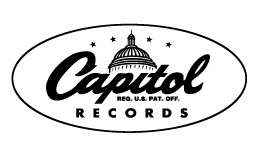 Shortly after the original 1963 contract was signed with United Artists, Capitol Records finally agreed to be the US distributors of The Beatles music. Being an EMI affiliate, they received exclusive rights, which included all future recordings including future soundtrack albums. Therefore this second movie, which eventually was titled “Help!,” had its original soundtrack album released on Capitol Records. Shortly after the original 1963 contract was signed with United Artists, Capitol Records finally agreed to be the US distributors of The Beatles music. Being an EMI affiliate, they received exclusive rights, which included all future recordings including future soundtrack albums. Therefore this second movie, which eventually was titled “Help!,” had its original soundtrack album released on Capitol Records.
Capitol couldn’t help noticing the amazing response United Artists had received from their Beatles soundtrack album the previous year, so they were gearing up for a repeat performance, since the group's popularity showed no signs of waning.
 Back cover of the US "Help!" soundtrack album
|
Origin Of The Album
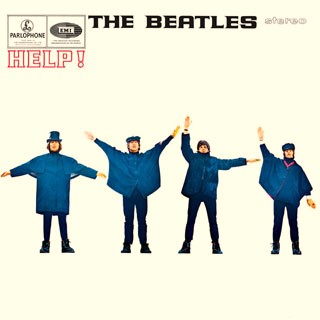 To start off, Capitol planned on mimicking the format United Artists used for their 1964 soundtrack album, interspersing Beatles songs heard in the picture with instrumental music from the movie. Capitol chose not to include The Beatles songs that appeared on side two of the British “Help!” album, electing instead to include these on later albums in order to incur more American sales. To start off, Capitol planned on mimicking the format United Artists used for their 1964 soundtrack album, interspersing Beatles songs heard in the picture with instrumental music from the movie. Capitol chose not to include The Beatles songs that appeared on side two of the British “Help!” album, electing instead to include these on later albums in order to incur more American sales.
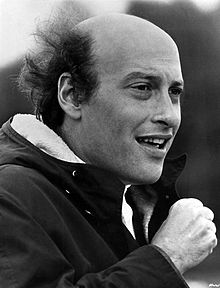 One noticeable difference concerning the instrumental tracks contained on the new soundtrack album was that they were not created by Beatles producer George Martin and his orchestra as the instrumentals on “A Hard Day’s Night” had been. Movie director Richard Lester made sure the film score went to Ken Thorne this time around. George Martin explains: One noticeable difference concerning the instrumental tracks contained on the new soundtrack album was that they were not created by Beatles producer George Martin and his orchestra as the instrumentals on “A Hard Day’s Night” had been. Movie director Richard Lester made sure the film score went to Ken Thorne this time around. George Martin explains:
“I produced all the tracks for the film, but I wasn't asked to do the scoring - another guy was offered the job. Dick Lester and I didn't hit if off too well on 'A Hard Day's Night,' and the fact that I got an Academy Award nomination for musical direction prabably didn't help either.”
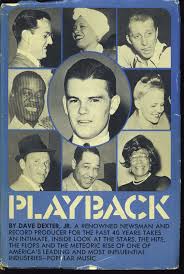 Since George Martin produced the seven Beatles tracks that appeared in the film, the production credits on the back of the album read, “Produced in England by George Martin and in the USA by Dave Dexter Jr.” Dexter was responsible for taking instrumental snippets from the movie and including them on the album in between The Beatles songs. He even took it upon himself to name these snippets. Since George Martin produced the seven Beatles tracks that appeared in the film, the production credits on the back of the album read, “Produced in England by George Martin and in the USA by Dave Dexter Jr.” Dexter was responsible for taking instrumental snippets from the movie and including them on the album in between The Beatles songs. He even took it upon himself to name these snippets.
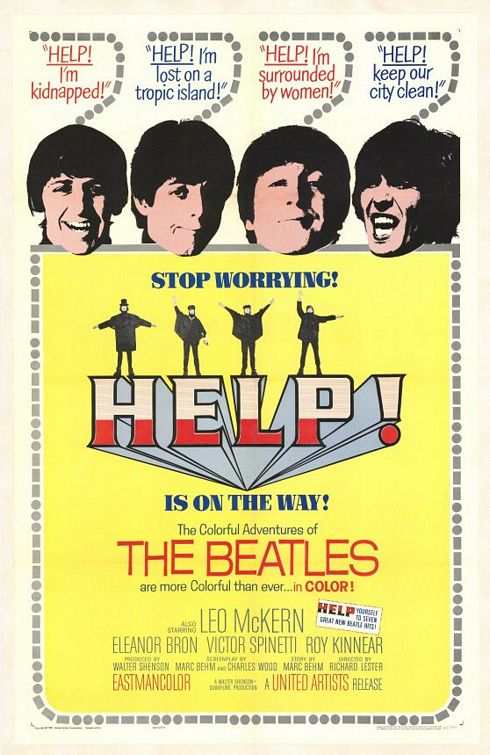 Another idea from Capitol was to treat this album as the standard “Original Broadway Cast” albums of the era, packaging the disc in an open-gatefold cover as a “very special movie soundtrack souvenir album!,” as the inside cover read. This being the case, they felt obliged to raise the list price of the album by a dollar, which brought the mono version of the album to $4.98 and the stereo to $5.98. Considering all the hype surrounding the release of the movie and the continued popularity of the group, Capitol felt that the extra dollar would not deter anyone. They were correct. Another idea from Capitol was to treat this album as the standard “Original Broadway Cast” albums of the era, packaging the disc in an open-gatefold cover as a “very special movie soundtrack souvenir album!,” as the inside cover read. This being the case, they felt obliged to raise the list price of the album by a dollar, which brought the mono version of the album to $4.98 and the stereo to $5.98. Considering all the hype surrounding the release of the movie and the continued popularity of the group, Capitol felt that the extra dollar would not deter anyone. They were correct.
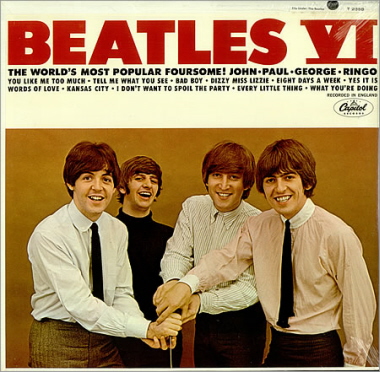 While not outselling the 1964 soundtrack album, it leapt to the #1 position on the Billboard album chart and stayed there for nine weeks. It generated over a million dollars worth of sales in the first week and ended up selling in excess of three million copies, which was three times the amount of the previous American Beatles album “Beatles VI.” Including only seven Beatles songs on the "Help!" Soundtrack album, one of which being "Ticket To Ride," which had been available since nearly four months prior, did not prevent three million Beatles fans from buying the it. While not outselling the 1964 soundtrack album, it leapt to the #1 position on the Billboard album chart and stayed there for nine weeks. It generated over a million dollars worth of sales in the first week and ended up selling in excess of three million copies, which was three times the amount of the previous American Beatles album “Beatles VI.” Including only seven Beatles songs on the "Help!" Soundtrack album, one of which being "Ticket To Ride," which had been available since nearly four months prior, did not prevent three million Beatles fans from buying the it.
 United Artists Records may not have been able to cash in on the music sales, but they tried. Since they had enjoyed a reasonable amount of success the previous year with George Martin’s orchestrated versions of the “A Hard Day’s Night” songs, they thought to release a similar album in conjunction with “Help!” “George Martin and his orchestra play Help!” was the title of a 1965 United Artists album that featured instrumental versions of all seven songs from the movie plus four from the second side of the British “Help!” album, namely "Tell Me What You See," “Antie Gin’s Theme” (I've Just Seen A Face), “That’s A Nice Hat (Cap)” (It's Only Love) and “Scrambled Egg” (Yesterday). United Artists Records may not have been able to cash in on the music sales, but they tried. Since they had enjoyed a reasonable amount of success the previous year with George Martin’s orchestrated versions of the “A Hard Day’s Night” songs, they thought to release a similar album in conjunction with “Help!” “George Martin and his orchestra play Help!” was the title of a 1965 United Artists album that featured instrumental versions of all seven songs from the movie plus four from the second side of the British “Help!” album, namely "Tell Me What You See," “Antie Gin’s Theme” (I've Just Seen A Face), “That’s A Nice Hat (Cap)” (It's Only Love) and “Scrambled Egg” (Yesterday).
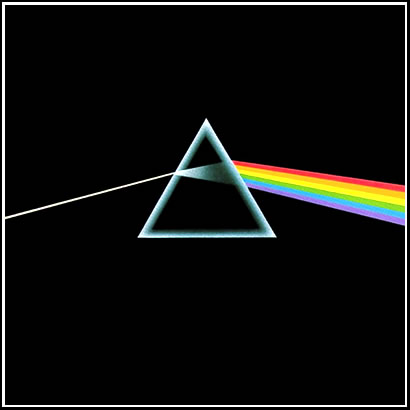 An interesting side note about this George Martin album concerns the track “Ticket To Ride.” The tape that was used to record the heartbeat sound heard at the beginning and end of the 1973 album “The Dark Side Of The Moon” by Pink Floyd was apparently the same tape that originally contained George Martin’s orchestrated rendition of “Ticket To Ride,” this tape being recycled for use at Abbey Road studios by 1972. Faint remnants of the George Martin recording can be detected on vinyl copies of the Pink Floyd album as Side Two concludes, while later remastered compact disc releases contain a corrected mix that omits the "Ticket To Ride" orchestration entirely. An interesting side note about this George Martin album concerns the track “Ticket To Ride.” The tape that was used to record the heartbeat sound heard at the beginning and end of the 1973 album “The Dark Side Of The Moon” by Pink Floyd was apparently the same tape that originally contained George Martin’s orchestrated rendition of “Ticket To Ride,” this tape being recycled for use at Abbey Road studios by 1972. Faint remnants of the George Martin recording can be detected on vinyl copies of the Pink Floyd album as Side Two concludes, while later remastered compact disc releases contain a corrected mix that omits the "Ticket To Ride" orchestration entirely.
Recording The Album
 After a non-stop hectic 1964, The Beatles started 1965 by taking nearly a month off (mid January to mid February) to recuperate and take vacations if they chose. They reconvened at EMI Studio Two on February 15th, 1965 to get down to the business of recording newly written compositions for their second motion picture. Over the next six days, Monday through Saturday, they completed eleven new songs under consideration of being included in the film. After a non-stop hectic 1964, The Beatles started 1965 by taking nearly a month off (mid January to mid February) to recuperate and take vacations if they chose. They reconvened at EMI Studio Two on February 15th, 1965 to get down to the business of recording newly written compositions for their second motion picture. Over the next six days, Monday through Saturday, they completed eleven new songs under consideration of being included in the film.
 Nine of these recordings were brand new Lennon / McCartney compositions, while George Harrison came through with a burst of creative output, offering up two new songs of his own. While his first ever song "Don't Bother Me" did get featured in their first movie (but not on the soundtrack album), he became bound and determined to get a piece of the songwriting action this time around. Nine of these recordings were brand new Lennon / McCartney compositions, while George Harrison came through with a burst of creative output, offering up two new songs of his own. While his first ever song "Don't Bother Me" did get featured in their first movie (but not on the soundtrack album), he became bound and determined to get a piece of the songwriting action this time around.
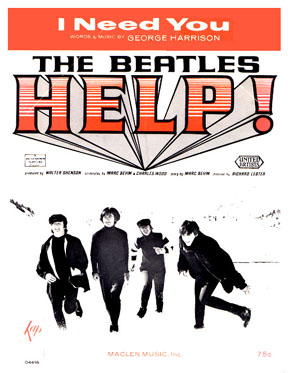 As was the case the previous year, only six of these songs made the grade. Director Richard Lester had the final say, and he chose one of George’s songs, namely “I Need You,” while his other track "You Like Me Too Much" was rejected. Undaunted, George was very proud of having one of his compositions included in the film and soundtrack album, evidenced by hearing Harrison verbally point it out when the song’s credit is viewed at the conclusion of the film. As was the case the previous year, only six of these songs made the grade. Director Richard Lester had the final say, and he chose one of George’s songs, namely “I Need You,” while his other track "You Like Me Too Much" was rejected. Undaunted, George was very proud of having one of his compositions included in the film and soundtrack album, evidenced by hearing Harrison verbally point it out when the song’s credit is viewed at the conclusion of the film.
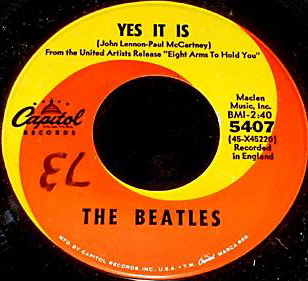 Most of the rejected songs did get released in different forms. “Yes It Is” may not have fit the mood of the movie, but it was earmarked early on for the b-side of their April single “Ticket To Ride.” George’s “You Like Me Too Much” and Paul's “Tell Me What You See” first appeared on the American album “Beatles VI,” eventually winding up on side two of the British “Help!” album. Most of the rejected songs did get released in different forms. “Yes It Is” may not have fit the mood of the movie, but it was earmarked early on for the b-side of their April single “Ticket To Ride.” George’s “You Like Me Too Much” and Paul's “Tell Me What You See” first appeared on the American album “Beatles VI,” eventually winding up on side two of the British “Help!” album.
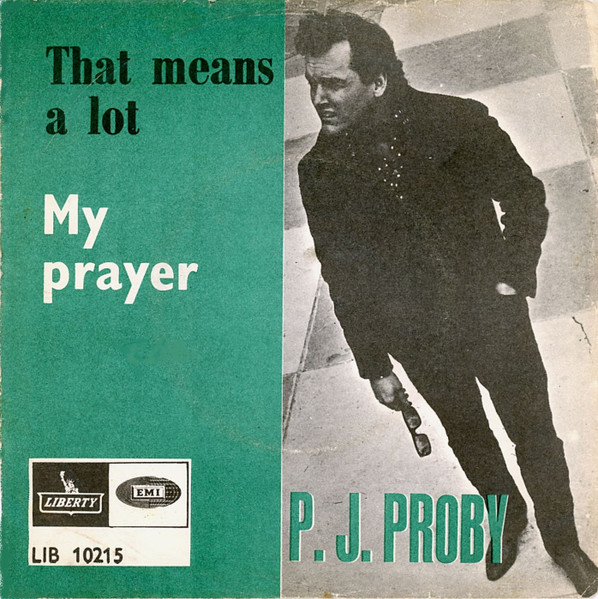 Two other songs, however, were apparently rejected as well, since they weren't released until the '90s. The Lennon and McCartney compositions "If You've Got Trouble" and the only song recorded on Saturday, "That Means A Lot," were relegated to the shelf indefinitely. Even though they returned to the recording studio mid-movie to have another go at the latter song, this too was deemed unworthy of release and was given to singer P.J. Proby to release as a single. Being that this single was unsuccessful, it would seem the world just wasn’t ready for a love song that mentioned “suicide” in the lyrics. Two other songs, however, were apparently rejected as well, since they weren't released until the '90s. The Lennon and McCartney compositions "If You've Got Trouble" and the only song recorded on Saturday, "That Means A Lot," were relegated to the shelf indefinitely. Even though they returned to the recording studio mid-movie to have another go at the latter song, this too was deemed unworthy of release and was given to singer P.J. Proby to release as a single. Being that this single was unsuccessful, it would seem the world just wasn’t ready for a love song that mentioned “suicide” in the lyrics.
 One further song, though, was required for the movie, which needed to be named after the title of the film. The problem was that they hadn’t yet decided what the movie would be called. When, on April 11th, 1965, they got the OK to name the movie “Help!” (with an exclamation mark), John and Paul got to work on writing the title song. By April 12th, 1965, the song was complete, and by April 13th, it was fully recorded at EMI Studio Two. One further song, though, was required for the movie, which needed to be named after the title of the film. The problem was that they hadn’t yet decided what the movie would be called. When, on April 11th, 1965, they got the OK to name the movie “Help!” (with an exclamation mark), John and Paul got to work on writing the title song. By April 12th, 1965, the song was complete, and by April 13th, it was fully recorded at EMI Studio Two.
 As for the instrumental tracks on the Capitol album, The Beatles won out there as well. Since much of the musical score by Ken Thorne was based on previous Beatles material, three of the instrumental selections contained the “Lennon / McCartney” composer credit, which resulted in additional songwriting royalties being paid to John and Paul. The instrumental songs in question were "From Me To You Fantasy," "Another Hard Day's Night" and the second half of a medley on side two that combined "The Bitter End" with touches of a barely recognizable "You Can't Do That." As for the instrumental tracks on the Capitol album, The Beatles won out there as well. Since much of the musical score by Ken Thorne was based on previous Beatles material, three of the instrumental selections contained the “Lennon / McCartney” composer credit, which resulted in additional songwriting royalties being paid to John and Paul. The instrumental songs in question were "From Me To You Fantasy," "Another Hard Day's Night" and the second half of a medley on side two that combined "The Bitter End" with touches of a barely recognizable "You Can't Do That."
 It is quite obvious that the emphasis of these instrumental tracks were not very important in the preparation of this album. The back cover of the album was prepared before they even knew what these songs were named (listing them simply as “instrumental”) and they never went back to include them on later pressings. The first pressing of the record labels even failed to indicate Ken Thorne as the composer of three of the songs. Capitol Records was obviously anxious to get the album out as soon as possible. It is quite obvious that the emphasis of these instrumental tracks were not very important in the preparation of this album. The back cover of the album was prepared before they even knew what these songs were named (listing them simply as “instrumental”) and they never went back to include them on later pressings. The first pressing of the record labels even failed to indicate Ken Thorne as the composer of three of the songs. Capitol Records was obviously anxious to get the album out as soon as possible.
Cover Art
 A gatefold album cover for a pop record in America was somewhat unheard of, but not for a movie soundtrack album. Capitol used the established format common to '60s motion picture and Broadway soundtrack albums to create a cover that celebrated the release of the movie, which came out on July 29th, 1965. This highly anticipated album was released just over two weeks later on August 13th. One factor that led to this album being highly anticipated was that four months prior to it being released, the American single “Ticket To Ride” featured the legend “From the United Artists Release ‘Eight Arms To Hold You'.” If by this point the news hadn't yet reached their fans that The Beatles were making a new movie, they surely knew it now! A gatefold album cover for a pop record in America was somewhat unheard of, but not for a movie soundtrack album. Capitol used the established format common to '60s motion picture and Broadway soundtrack albums to create a cover that celebrated the release of the movie, which came out on July 29th, 1965. This highly anticipated album was released just over two weeks later on August 13th. One factor that led to this album being highly anticipated was that four months prior to it being released, the American single “Ticket To Ride” featured the legend “From the United Artists Release ‘Eight Arms To Hold You'.” If by this point the news hadn't yet reached their fans that The Beatles were making a new movie, they surely knew it now!
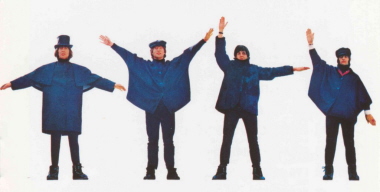 The simple British album cover for this collection and the American version couldn’t have been more different. The only commonality between the two was the Beatles' cover photo, which was taken by Robert Freeman at Twickenham Film Studios in London. His main intention was to have the group hold out their arms to spell out the word “help” in semaphore letters. He gave up on this idea when it looked too awkward and told them to hold their arms in more natural poses. The result on the British album ended up spelling out the word “nujv” but, since Capitol decided to reposition Ringo to second from the left, it spelled out the word “nvuj” on the American album. Capitol also decided to reproduce this color photo in black and white for some reason. The simple British album cover for this collection and the American version couldn’t have been more different. The only commonality between the two was the Beatles' cover photo, which was taken by Robert Freeman at Twickenham Film Studios in London. His main intention was to have the group hold out their arms to spell out the word “help” in semaphore letters. He gave up on this idea when it looked too awkward and told them to hold their arms in more natural poses. The result on the British album ended up spelling out the word “nujv” but, since Capitol decided to reposition Ringo to second from the left, it spelled out the word “nvuj” on the American album. Capitol also decided to reproduce this color photo in black and white for some reason.
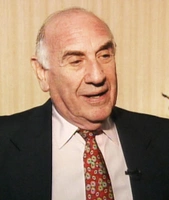 The back cover, as with most soundtrack albums of the time, focuses on the film's major credentials, such as the main actors (other than The Beatles), the producer and director, who wrote the screenplay and who did the musical score. United Artists may not have been able to release the album but they graciously got a major plug on the back of the album jacket. The back cover, as with most soundtrack albums of the time, focuses on the film's major credentials, such as the main actors (other than The Beatles), the producer and director, who wrote the screenplay and who did the musical score. United Artists may not have been able to release the album but they graciously got a major plug on the back of the album jacket.
The inside fold-out cover simply contains eight photos from the movie (only three in color) with a brief but glorified synopsis of the movie. Producer Walter Shenson is quoted therein, saying “The boys sincerely hope that what they’ve done will be fun for everyone.”
 Capitol also extended their promotion of the album in a unique way. They struck a deal with Curad to produce one million “Help” band-aids to generate demand for the album. The band-aids actually had the words “BEATLES” and “HELP” printed on them, although nobody specified that they should use the exclamation mark. In conjunction with this promotion, Capitol prepared bumper stickers that resembled band-aids to promote the album, making sure to include the Capitol logo. Try to find these collectors’ items today! Capitol also extended their promotion of the album in a unique way. They struck a deal with Curad to produce one million “Help” band-aids to generate demand for the album. The band-aids actually had the words “BEATLES” and “HELP” printed on them, although nobody specified that they should use the exclamation mark. In conjunction with this promotion, Capitol prepared bumper stickers that resembled band-aids to promote the album, making sure to include the Capitol logo. Try to find these collectors’ items today!
Written and compiled by Dave Rybaczewski
CLICK ON THE SONG TITLES BELOW TO READ THE IN-DEPTH HISTORY OF THE SONGS ON THE "HELP!" SOUNDTRACK
|
IF YOU WOULD LIKE TO MAKE A DONATION TO KEEP THIS WEBSITE UP AND RUNNING, PLEASE CLICK BELOW!
Sign Up Below for our MONTHLY BEATLES TRIVIA QUIZ!
|